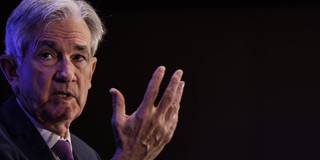Given the depth of the recession caused by COVID-19 in early 2020, the current state of the US economy and labor market is nothing short of spectacular. And though an inevitable increase in inflation has rained on the parade, there is still good reason to think that it will subside in the medium term.
BERKELEY – Many who now worry about rising inflation in the United States may disagree, but the US Federal Reserve should take a victory lap. Just consider what the Fed has achieved over the past two years.
At this time in 2020, the COVID-19 pandemic had pushed employment down by a massive 14% when large portions of the economy were forced to shut down. And although employment bounced back when the economy began to reopen, it nonetheless remained 7% below its pre-pandemic level.
Getting back that remaining 7% was always going to be difficult, because it required a re-division of labor. During the disappointing, anemic, unsatisfactory recovery from the Great Recession a decade ago, re-knitting the fabric of the labor market occurred at a pace that increased employment only about 1.3 percentage points per year. Because demand was slack and growing only very slowly during this period, it was difficult to figure out which business models would be profitable and where labor was really needed.

BERKELEY – Many who now worry about rising inflation in the United States may disagree, but the US Federal Reserve should take a victory lap. Just consider what the Fed has achieved over the past two years.
At this time in 2020, the COVID-19 pandemic had pushed employment down by a massive 14% when large portions of the economy were forced to shut down. And although employment bounced back when the economy began to reopen, it nonetheless remained 7% below its pre-pandemic level.
Getting back that remaining 7% was always going to be difficult, because it required a re-division of labor. During the disappointing, anemic, unsatisfactory recovery from the Great Recession a decade ago, re-knitting the fabric of the labor market occurred at a pace that increased employment only about 1.3 percentage points per year. Because demand was slack and growing only very slowly during this period, it was difficult to figure out which business models would be profitable and where labor was really needed.